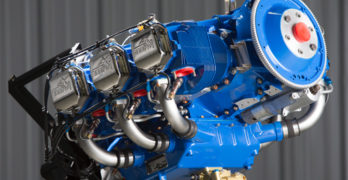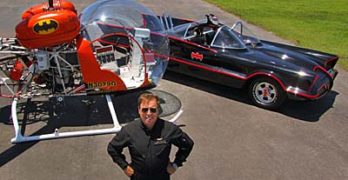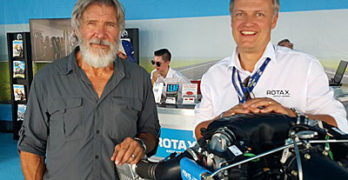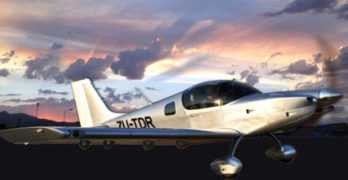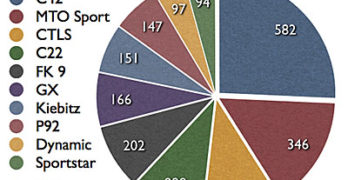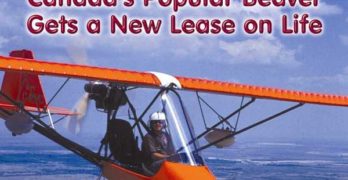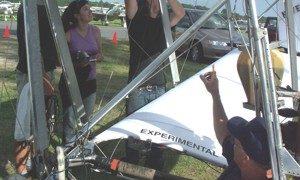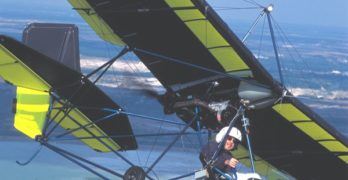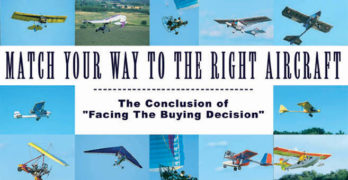A few years ago, I visited Continental Motors in Mobile Alabama on the Gulf coast of the southern U.S. state.
Here’s what I wrote about that tour. The factory was a World War II-vintage facility. I saw many new CNC machines and they were humming with activity. I also saw acres of the earlier generation of engine-manufacturing equipment. Nearly all of this hardware was idle even as it occupied large amounts of space. Times have changed. Continental changed, too, but the old tooling still rested in position
Now, that is changing. Last year the company announced their new “green field” construction project, one of the largest in the state. It was clear that …well, let’s hear how the company describes it.
“This Is a New Dawn”
“We’re proud to introduce you to the new name and brand identity of a company that has been a major leader in the world of aviation for over 110 years.” said Continental.
Search Results for : vintage series
Not finding exactly what you expected? Try our advanced search option.
Select a manufacturer to go straight to all our content about that manufacturer.
Select an aircraft model to go straight to all our content about that model.
Holy Batcopter! …to the Rescue? No, But How About to Sebring 2018?
Amazingly, “Holy Batcopter!” was not one of the 368 different “Holy…” exclamations uttered by the Robin character in the 1960s TV series. The iconic Bell 47 chopper — without Robin or Batman — will make an appearance at the U.S. Sport Aviation Expo in just a couple weeks. The event runs January 24-27 this year.
“Relive the 1960’s era at Sebring’s Aviation Expo with a ride on the original N3079G Batcopter from the Batman TV series,” encouraged promoters of the 14-year-old event.
In 1996, pilot Eugene Nock bought the famous helicopter, which was used in the 1966 “Batman” movie and several TV shows.
“What we have is an icon in the aviation world as well as the collectable toy world,” Nock said. “It is a one-of-a-kind aircraft, absolutely internationally recognized.”
That’s why Nock — an airline transport pilot who has logged more than 14,000 hours — will be flying this vintage flying machine at the upcoming Sebring Expo.
Latest and Greatest LSA from Oshkosh 2016
In a show as vast at EAA’s AirVenture Oshkosh, it is presumptuous to attempt covering everything of interest. What follows are some new aircraft I found in the categories I cover on this website. Other projects were certainly worthy of special note but with the goal of a fast dash through the latest and greatest, I’m keeping this one fairly lean. I’ll cover other developments in subsequent articles.
So, here’s three aircraft you haven’t seen before AirVenture 2016 plus a revised project involving an increasingly popular engine. I’ll start off with a famous guy checking out a famous engine to propel one of my favorite airplanes. We begin our quick review with Lockwood Aircraft‘s AirCam.
Of course, you know his face. When I once heard Harrison Ford speak, he said modestly (paraphrased), “I earn a living making faces.” I never thought of acting in such simple terms, but I accept such skills are part of the job.
Ride-On Zlin; New Variation on Theme
Thanks to powerful Cubalike airplanes — those vintage yellow taildraggers types with huge engines up front to make them perform more energetically — 2014 saw increased attention to the Savage Cub S. The Czech company offered their 180-horsepower version of the Cubalike phenomenon albeit at a more affordable price. The leading brand of Cub-like airplanes has pushed prices beyond $200,000, which strikes plenty of people as paying a premium, though most agree the design is handsomely achieved. They continue to sell well so vintage style appears to hold appeal.
Meanwhile, Zlin engineers aren’t sitting still. This company has quite a flock of intriguing models, including Savage Classic, Savage Cruiser, Savage Cub (marketed as iCub in the U.S.), Savage Cub S, and Bobber. All these are now represented in America by SportairUSA, which also imports the TL Ultralight Sting and Sirius as well as selling Searey amphibious kits among a variety of other products of services they’ve assembled.
LSA Taildraggers Broaden the Sector’s Appeal
Taildraggers may be among the least understood and most feared aircraft available in the LSA space … or for that matter throughout general aviation. While we have many good choices that I’ll list below, I have nonetheless heard from many readers or airshow visitors that they are uncertain about their operation of an aircraft that has no nosewheel. If you have no taildragger skills, you’ll also find it a challenge to get proper flight instruction in a “standard” aircraft. For those seeking new skills in flying, however, taildraggers may provide high satisfaction. Most who have crossed the barrier to taildragging subsequently look very fondly at such aircraft, seeing a sleeker yet gutsier, more rugged appearance. Of course, nosewheels dominate general aviation as they can be easier to land, especially in crosswinds, but once you learn the lesson of “happy feet” — or keeping your feet active on the rudder pedals throughout approach and touchdown — you may always yearn for more taildragger time.
Germany’s Top 10 Ultralights by Aerokurier
Much of what we hear and know about airplane populations is centered on America. Yet in the world of sport and recreational aviation, the rest of the world equates to at least a 1:1 relationship, that is, for every American aircraft flying, many experts agree another flies internationally. It may be more significant than that … consider Germany.
In mid-August, our friends at Aerokurier, Germany’s leading aviation magazine, assembled an article about the top 10 ultralights in that country. A European ultralight, as you may know, is not the same as an American ultralight that is today limited to a single seat and no more than 254 pounds of empty weight. In Germany and elsewhere around the European Union, “ultralight” refers to an airplane much like a U.S. Light-Sport but limited in weight to 472.5 kilograms or 1,041 pounds.
Originally the weight limit had been 450 kilograms or 992 pounds but because emergency airframe parachutes are mandatory in Germany the weight was increased a few years ago to cover this component.
Beaver RX-550
Perhaps the most famous ultralight to come out of Canada is the Beaver. With a reported 2,200 units flying since the early 1980s, this is one of the most successful light aircraft ever. However, due to missteps by companies that previously manufactured the brand, this popular ultralight was nearly lost from the ultralight aviation landscape. Were it not for the Aircraft Sales and Parts (ASAP) company and the Holomis family, you might not have this choice today.
Originally the Beaver RX-550 came from a company called Spectrum Aircraft. A company reorganization left the ultralight in the hands of a company named Beaver RX Enterprises. Both these business names disappeared and today the ASAP brand carries the Beaver into the sky.
In 1993, a couple years after our last report on the Beaver1, the old company closed its doors and effectively stranded thousands of Beaver ultralight owners and all the dealerships that sold them.
Pioneer in Ultralight Industry Still Going Strong
John K. Moody is widely acclaimed as the “Father of Ultralights,” and he makes effective use of that unique title to publicize his new millennium act featuring his last millennium ultralight.
Is Moody really the father of ultralights or the first to fly one? Several other enthusiasts were experimenting with power units for various kinds of hang gliders in the mid-1970s when Moody started. His distinction was that he was the first person to foot-launch and climb from flat terrain without benefit of wind or a slope.
I saw Moody fly in the summer of 1975 when he performed before about 250 hang glider pilots in a contest on the sand dunes near Frankfort, perched on the eastern shore of Lake Michigan. He began this risky behavior on March 15, 1975, above a frozen lake southwest of Milwaukee, at age 32.
Into almost still winds at the end of a day of hang-gliding competition, Moody ran his heart out and coaxed his Icarus II biwing hang glider off the beach with a 10-hp West Bend engine giving him some push.
Simple Sprint Pleasures
Excelling at “Just For Fun”
Going back to our roots and the dandy little ultralights that have given in-flight satisfaction to so many, we’re going to take a look at one of those aircraft, Quicksilver’s MX Sprint.
Some veteran pilots call the MX Sprint “humble,” but it is one of those “original” ultralight aircraft that simply won’t go away, and it shouldn’t. Why? Because the Sprint still offers a joyful flying experience that redefines boring holes in the sky. You pilot a Sprint in relative ease and at remarkable low cost, and once price enters the discussion, many ultralights show their value clearly.
Many in light-sport aviation are realizing that aircraft certified Experimental Light-Sport Aircraft (ELSA) and Special Light-Sport Aircraft (SLSAs), even when approved under a simplified, industry-created, ASTM-guided program, will be rather expensive aircraft. Some sleek fiberglass creations are reaching toward the six-figure mark – an unbelievable development given that ultralights have historically traded in a range of $8,000 to $35,000, the latter being a superbly equipped, Rotax 912-powered machine.
How-to-Buy a Lightplane — Part 3 of 3
In the previous two installments, we’ve discussed you, the pilot, and the many types of aircraft choices you have. As we wrap up this series, we’ll put it all together and try to help you narrow your choices to a few models.
Notice the word “try.” It is important that you understand that it is not possible to direct you to the one-and-only best choice of aircraft. Novice buyers often seek assistance but even experienced pilots can become swayed and end up purchasing the wrong aircraft for their needs and desires. Because aircraft purchases are commonly emotional decisions, it is helpful to gain a “second opinion” to help make a more rational choice.
Many years ago, at the beginning of my career writing articles in light aviation, I made a similar attempt to help hang glider pilots choose the right glider. I compared nine contemporary models to an idealized “perfect” glider and through a series of questions much like those below, tried to steer pilots to the one right glider for them.


